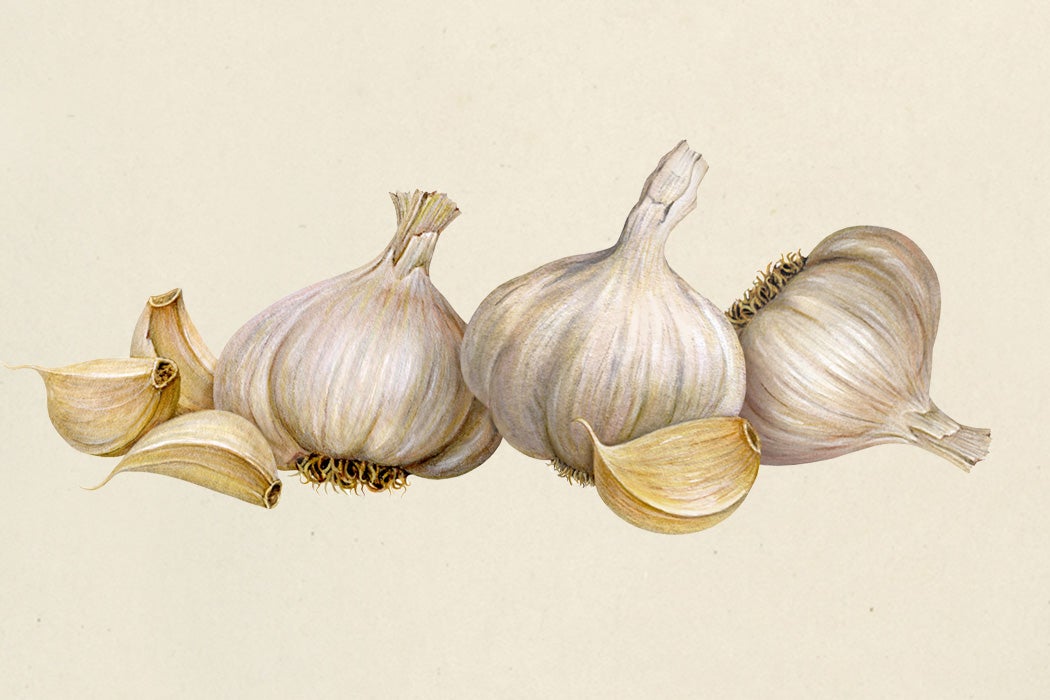Garlic: crucial ingredient in practically every savory food, or source of stinky kitchens and stinkier breath? As American literature scholar Rocco Marinaccio writes, our answers to that question have deep roots in class, race, and geography, particularly when it comes to the treatment of Italian immigrants in the United States.
Long before waves of Italian immigrants arrived in the United States, Marinaccio writes, Italians themselves connected garlic with social class. In an 1891 cookbook, Pellegrino Artusi describes ancient Romans leaving garlic “to the lower classes, while Alfonso King of Castile hated it so much he would punish anyone who appeared in his court with even a hint of it on his breath.” Artusi urges his presumably upper-class readers to overcome their “horror” at cooking with garlic by using just a little. His recipe for a stuffed veal breast includes less than a quarter of a clove.
The class connotations of garlic had a geographical component. The relatively impoverished south used more garlic-heavy foods. An 1898 study by Alfredo Niceforo, a statistician known for his advocacy of scientific racism, argued that the people of southern Italy “are still primitive, not completely evolved,” in comparison with northerners.
It was mainly southern Italians who immigrated to the U.S. in the early twentieth century, and these same racial constructions followed them. A 1911 Immigration Commission report described northern Italians as “cool, deliberate, patient, and practical.” Southerners, on the other hand, were “excitable” and “impulsive” with “little adaptability to a highly organized society.”
These prejudices were closely tied to food. Xenophobic native whites might refer to Italian immigrants with a number of food-based insults, like “spaghetti benders” or “grape stompers.” But, Marinaccio writes, the most notorious was “garlic eaters.” The anarchist ideology of Sacco and Vanzetti became known as “the garlic-smelling creed.”
Reformers visiting Italian-American tenements often used garlic odor as a shorthand for dirtiness and failure to assimilate to American ways. Dietician Bertha M. Wood described “highly seasoned” foods as a barrier to healthy Americanization. She warned that flavorful foods containing Mexican spices or Jewish pickled fish could “destroy the taste for milder foods.” Most of all, Wood pointed to the southern Italian use of hot pepper, garlic, and other strong seasonings. In recipes aimed at immigrants, she proposed cooking pasta, meats, and vegetables in egg- and dairy-based sauces with little onion, spices, or garlic.
Weekly Newsletter
As the twentieth century went on and Italian-Americans became established in the U.S., some embraced the distinctive, garlic-heavy flavors of southern Italy as a source of ethnic pride. Marinaccio notes that a single dish in John and Galina Mariani’s The Italian American Cookbook (2000)—Spaghetti with Potatoes and Garlic—contains more garlic than all of Wood’s Italian recipes put together.
Yet, even in the twenty-first century U.S., strong-smelling foods often remain a trigger for the mockery of recent immigrants from many different countries. Meanwhile, some in Italy—notably former Prime Minister Silvio Berlusconi—still see garlic as a smelly insult to polite society.







